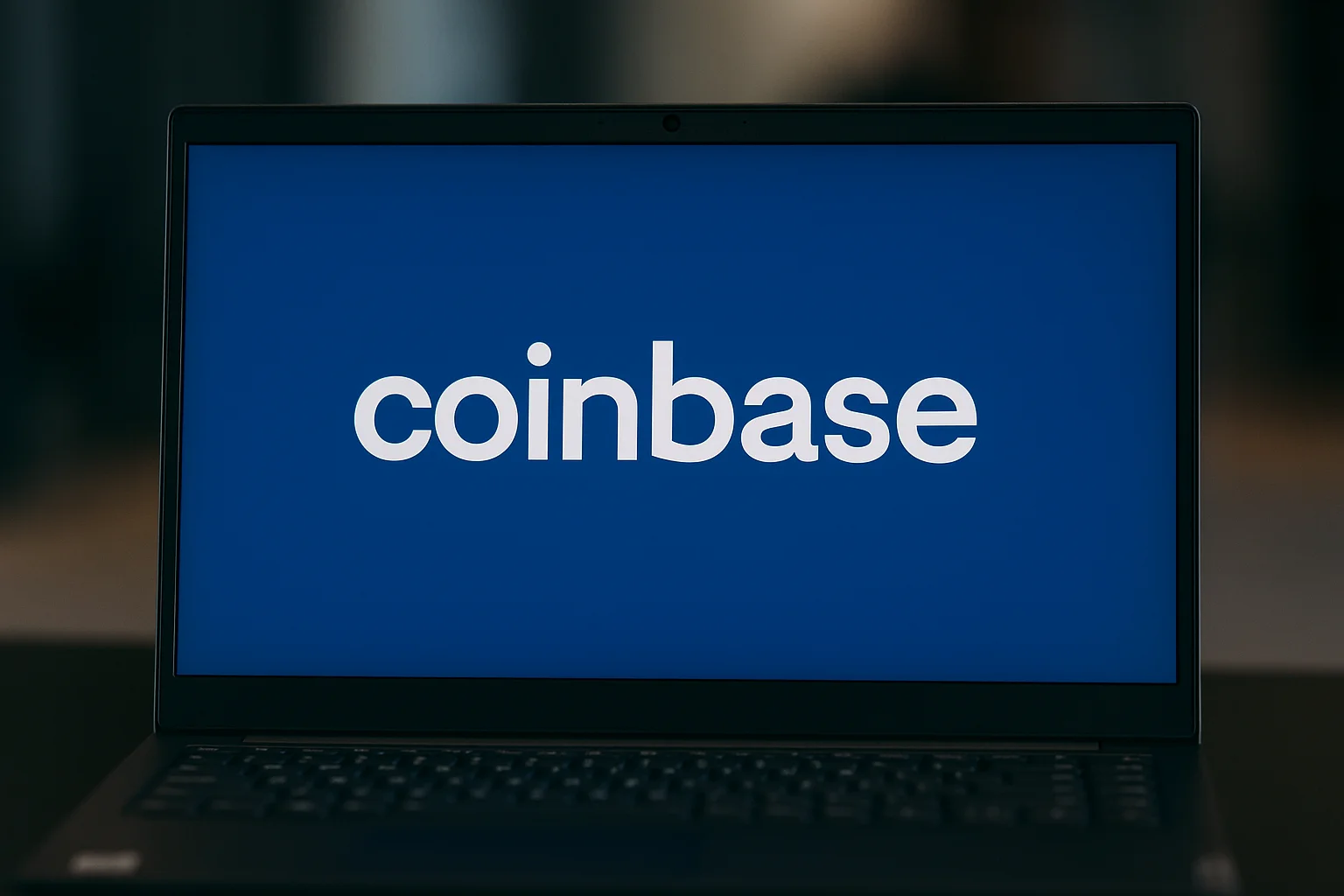News
Altcoin News
Altcoin News
Browse all Altcoin related articles and news. The latest news, analysis, and insights on Altcoin.
Czech Republic's Central Bank Takes Historic Step: Acquires Bitcoin and Stablecoins
The Czech National Bank (CNB) has taken a groundbreaking step for central banking in Europe. The bank announced the creation of a $1 million digital asset portfolio consisting of Bitcoin, a US dollar-pegged stablecoin, and a tokenized deposit. This portfolio is not part of the institution's official international reserves; it is a test account created solely for training, experience, and future planning purposes.The Czech National Bank breaks the moldCentral banks are known to shy away from directly holding cryptocurrencies. Due to volatility, regulatory uncertainty, and institutional risks, digital assets have not been included on central banks' balance sheets until now. Therefore, the CNB's move is considered both a first in the European Union and a significant global milestone.The CNB approved this pilot on October 30th. According to the bank's statement, the aim is to directly experience the processes of purchasing, storing, and managing blockchain-based assets. The experience gained from this process will be shared in regular reports over the next 2-3 years. The bank emphasizes that the total investment amount will not be increased and that this portfolio is financed independently of existing reserves.The most interesting aspect of this pilot program is that Bitcoin will be included on a central bank's balance sheet for the first time. CNB President Aleš Michl says that this idea was first raised in January 2025. This proposal, criticized by European Central Bank (ECB) President Christine Lagarde at the time, has now received official approval from the CNB's board of directors. The Czech Republic, despite being an EU member, has not adopted the euro, giving its central bank more leeway.Michl stated the following in a statement today: “I proposed the idea of a test portfolio in January 2025. Our goal was to understand how a decentralized asset like Bitcoin is positioned from a central bank perspective and to assess its potential for diversifying our reserves.”The assets added to the bank's test portfolio aren't limited to Bitcoin. The portfolio also includes a USD stablecoin; this was included to better understand the practical application of the blockchain-based dollar. It also examines how a tokenized deposit and the digital representation of traditional financial assets work.
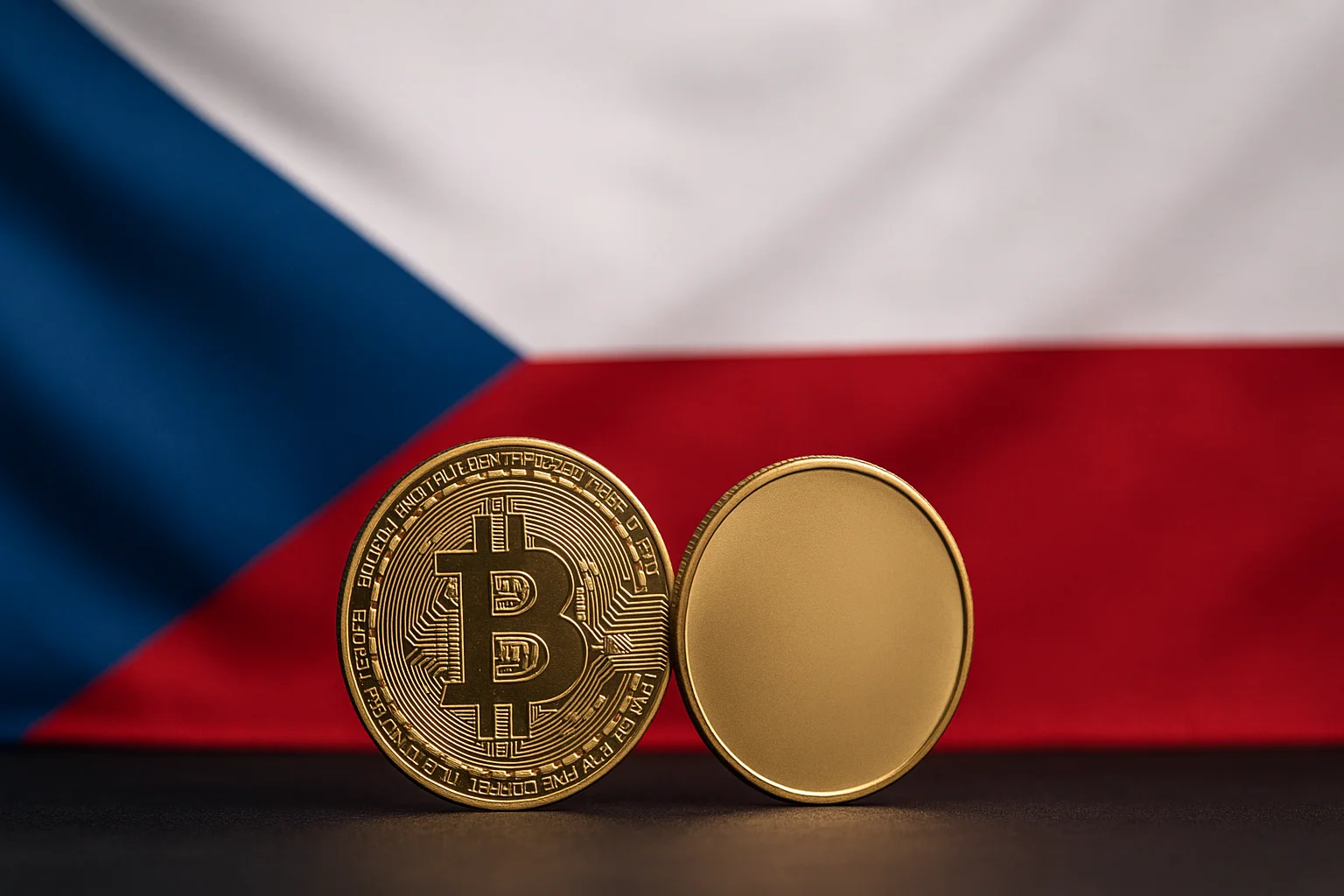
Binance Prepares to List New Altcoin: Alpha and Futures Trading Begins
Binance is adding a new project to its crypto ecosystem. Pieverse (PIEVERSE), developed on BNB Chain and treating time as an asset class, will begin trading on both Binance Alpha and Binance Futures on November 14th. This will make Pieverse one of the newest projects to enter the Binance ecosystem simultaneously through two different products.According to the platform's announcement, PIEVERSE will launch on Binance Alpha at 2:00 PM CEST on November 14, 2025. The PIEVERSEUSDT futures contract, offering up to 40x leverage, will be activated on Binance Futures at 2:30 PM CEST on the same day. Binance has raised expectations for the project by emphasizing that it is the first platform to list Pieverse.To celebrate this listing, Binance has also prepared a special Booster Program token allocation for eligible users who accumulate Alpha Points. However, tokens purchased through the program will be subject to a lockup period after the TGE. Users will not be able to claim these tokens until the project unlocks them. Binance specifically emphasizes that everyone participating in the Booster Program should understand these risks, as locked tokens can pose additional uncertainties for users due to market volatility and project risks. There are also noteworthy details regarding futures. The maximum leverage ratio for the PIEVERSEUSDT contract is set at 40x. Funding fees will be calculated every four hours, and the initial maximum funding ratio will be +2% / -2%. Thanks to Multi-Asset Mode support, users can trade this contract using other assets, such as BTC, as collateral, subject to appropriate deductions. Binance adds that it can adjust contract parameters such as the funding ratio, leverage limit, margin requirements, and tick size based on market conditions.What is Pieverse?The Pieverse project itself is also generating interest. Pieverse is a platform that, with its "TimeFi" approach, treats time as a real-world asset (RWA) and creates an AI-powered economy. Users can explore their time, earn money, and manage it through mechanisms like offers, lotteries, tasks, or challenges. Pieverse connects Web2 calendars (Google, Outlook) to Web3, enabling verifiable interactions, bringing users' time management, planning, and attention processes onto the chain.One of the platform's most prominent components is TimePot. This platform provides a revenue mechanism that converts user attention and planning into token rewards. It also establishes a framework that guides users in areas such as healthy living, work discipline, and learning goals through AI-powered personal time challenges. Pieverse's community-focused structure is supported by DAO governance, and its VC Arena section brings together creators, founders, and communities to present projects to venture capitalists.Pieverse, which emerged from the Binance MVB 9 support program, is positioned as one of the next-generation platforms that financialize time. Considering both its decentralized application logic and RWA approach, it is anticipated that the concept of TimeFi will be discussed more frequently in the coming period. Binance's statement emphasizes: Futures listings are not directly related to spot listings. Therefore, PIEVERSE's listing on Futures does not necessarily mean it will also be listed on the spot market. Users are advised to follow the official Binance announcements for the latest information.
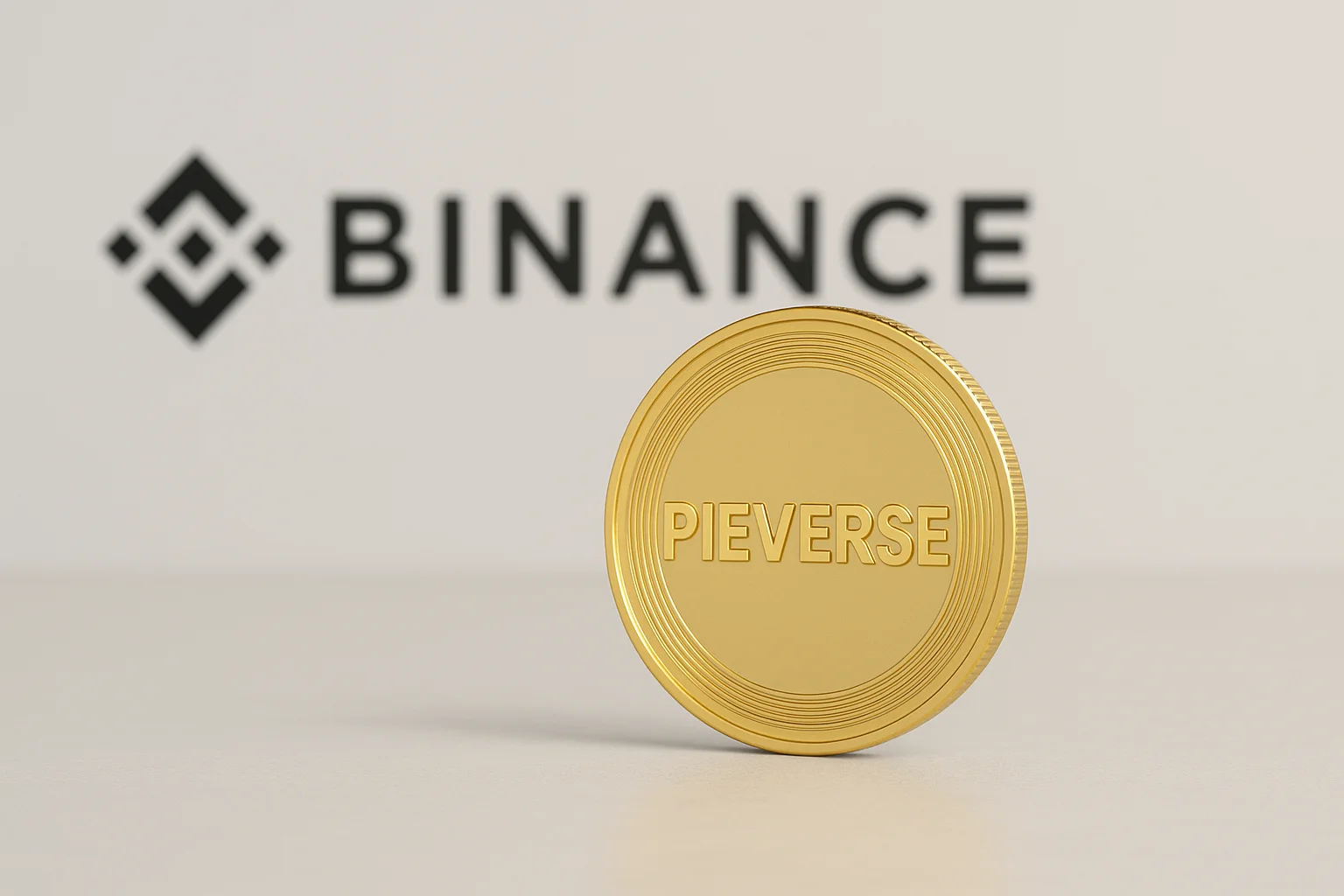
Coinbase Lists Nomina, Adds TON and XPL to Roadmap
Coinbase continues its expansion into altcoins at full speed. While preparing to list Nomina (NOM) on its platform, the exchange also added Plasma (XPL) and Toncoin (TON) to its official roadmap on the same day. This not only announced a new asset that will be available for trading in the near future but also officially launched the listing process for two popular altcoins.Coinbase Lists NOMCoinbase has made a new announcement that is boosting activity in the crypto market. The US-based exchange continues to expand its listing volume by adding a new altcoin to its ecosystem. According to the company's latest statement, Nomina (NOM) has been added to Coinbase's official listing roadmap and will be available for trading soon. This prepares NOM to become a new asset on the platform accessible to both individual and institutional investors.Coinbase's announcement stated that Nomina will be accessible via coinbase․com, the Coinbase mobile app, and Coinbase Advanced. For institutional investors, trading will be initiated directly through Coinbase Exchange. At this point, the company emphasized that liquidity will be the determining factor. The NOM-USD trading pair is planned to be gradually activated in the evening hours of November 13, 2025; however, sufficient liquidity is essential for this to happen. Full-volume trading will be launched once liquidity is established.However, Coinbase also noted that the new listing may not be available in every region. Due to varying regulatory restrictions and licensing requirements, NOM may be unavailable in some countries. Therefore, users are strongly advised to check regional restrictions before trading. With these compliance steps, the company aims to both remain within the legal framework and prioritize user security.Price volatility on the Nomina side was also felt shortly after the announcement. According to market data, the NOM price experienced a limited increase due to the news, but returned to a steady trend later in the day. The NOM price is currently trading at 0.0144, a 1.8% increase in the last 24 hours. Coinbase Adds TON and XPL to its RoadmapCoinbase hasn't limited its listing roadmap to just Nomina. The company announced today that two new assets have been added to its roadmap: Plasma (XPL) and Toncoin (TON). The date for trading for these assets has not yet been determined. According to a statement from the Coinbase Markets team, the process for both assets will depend on market maker support and the full readiness of technical infrastructure. The company will announce the trading start date when these conditions are met.Coinbase's addition of an asset to its roadmap officially announces that the altcoin may be listed in the future. This phase doesn't guarantee a listing, but it does indicate that Coinbase has begun technical and compliance reviews on the asset. This officially begins the process: regulatory checks are conducted, security tests are conducted, and market maker liquidity is assessed. Once all conditions are met, the asset receives a full listing announcement and trading pairs are activated. Therefore, adding it to the roadmap is generally seen as a positive and “candidate listing” signal for an altcoin.

ARB Comment and Price Analysis - November 12, 2025
ARB Technical AnalysisArbitrum hasn't been experiencing any significant activity in terms of trading volume or network activity recently. However, the price's struggle to hold onto support areas and heavy buying at some addresses suggest it remains on investors' radar. While on-chain data remains calm, there's potential for direction on the technical side. Falling Wedge Formation Analyzing the ARB chart on a daily time frame, we see that the coin keeps trading inside a falling wedge formation. This is typically known as a bullish reversal pattern. The price is currently hovering around the midline of the wedge, and holding this area strengthens the case for a potential upside breakout in the coming sessions. In the short term, the $0.30–$0.32 zone remains a key support area. As long as the price stays above this level, the overall outlook remains constructive.The $0.36–$0.39 range is the first major resistance and could mark the start of a move toward the wedge’s upper boundary. If an upside breakout occurs, targets lie at $0.45–$0.51, with the full wedge projection pointing toward $0.62.However, a daily close below $0.28 would weaken the structure and increase selling pressure.These analyses, not offering any kind of investment advice, focus on support and resistance levels considered to offer trading opportunities in the short and medium term according to the market conditions. However, traders are responsible for their own actions and risk management. Moreover, it is highly recommended to use stop loss (SL) during trades.

What is XDC Network (XDC)?
Global trade is accelerating daily, but financial systems still operate with the cumbersome legacy of the old order. Payments take days, documents are lost in paperwork, and costs are rising. This is where the XDC Network comes into play. Responding to institutions' quest for speed, trust, and efficiency, this hybrid Layer-1 blockchain network combines the best aspects of public and private chains under one roof. It reduces cross-border payments to seconds, digitizes trade finance, and reduces transaction costs to nearly zero. Thanks to its Ethereum-compatible infrastructure, smart contracts run seamlessly on XDC, and its native token, XDC, is at the heart of this new digital financial system.XDC Network Definition and OriginsFounded in 2017 by Atul Khekade and Ritesh Kakkad, XDC Network began its journey with the goal of transforming the slow, expensive, and complex financial systems of global trade. Khekade was an experienced entrepreneur in finance and technology, while Kakkad was an expert in cloud infrastructure and web technologies. The duo aimed to establish an ecosystem that would bring together governments, financial institutions, suppliers, and regulators on the same digital network. Developed with this vision, the XDC Network aims to bring speed and transparency to the global economy by providing a more efficient financial infrastructure.Traditional trade finance still operates through documents, letters of credit, and paperwork. Payments take days, fees increase, and processes are prone to errors. The XDC Network breaks this chain. The network transforms commercial documents and financial instruments into digital tokens and brings them to the blockchain. This allows transactions to occur in seconds, reduces costs, and makes the entire process more transparent and traceable.Thanks to its hybrid blockchain architecture, XDC provides full visibility into public transactions while also providing privacy to enterprises through dedicated subnets. This structure enables companies to comply with regulatory requirements without compromising data privacy. In short, the XDC Network stands as a blockchain infrastructure that redefines the balance of speed, security, and cost at an enterprise scale. XDC subnet image. Source: XDC/Docs XDC Network History: Major MilestonesSince its launch in 2017, the XDC Network has grown steadily, becoming a major player in the global trade infrastructure. Here are the major milestones in the network's journey:2017: The XinFin (eXchange inFinite) project was announced, and the foundations of the XDC Network were laid by Atul Khekade and Ritesh Kakkad. Initially, the Ethereum-based XDCE token was issued, with plans to later convert these tokens into XDC mainnet tokens on a 1:1 basis.June 1, 2019: The XDC mainnet officially launched. This was the first concrete milestone in the project's goal of "bringing global trade to the blockchain." With the launch of the mainnet, XDC became an independent entity operating on its own chain.2020: The XDC Network was cited as a case study in a report prepared by the World Trade Organization (WTO) and the International Chamber of Commerce (ICC). The TradeFinex platform was featured in the WTO's book "Blockchain & DLT in Trade" as an example of blockchain applications in trade finance. This earned XDC recognition in the global trade community.2021: The XDC Foundation was established to support the growth of the ecosystem. Established with grant support from XinFin, this foundation undertook community-driven development and ecosystem funding. That same year, XDC became the first blockchain project to join the Trade Finance Distribution Initiative (TFD Initiative) institutional trade finance consortium. In September, a bridge was created between R3's enterprise network, Corda, and XDC. This bridge made the XDC token available as a native payment instrument in the Corda ecosystem, establishing a direct connection between private enterprise networks and the public blockchain.2022: The first security-backed tokens were launched on XDC. Tradeteq issued TRADA tokens, backed by traditional financial assets, on the XDC network. These regulatory-approved tokens securitized trade finance assets and opened them to investors. That same year, STASIS EURS, Europe's largest euro-backed stablecoin, began trading on XDC. This step demonstrated that XDC could be used for fiat-backed digital money transfers across multiple chains.2023: The XDC ecosystem gained wider adoption in the enterprise space. In December, a digital trade transaction secured by an electronic bill of lading (e-BL) was executed on the XDC Trade Network in collaboration with Tradeteq and TradeFlow Capital. This transaction, which provided liquidity for a seven-day shipment period, demonstrated the practical benefits of XDC in trade finance. That same year, a partnership with Japan-based SBI Holdings launched SBI XDC Asia Pacific. This initiative accelerated enterprise integration in the Asian market.2024: The XDC developer community announced the XDC 2.0 update, designed to improve the network's security and performance. Whitepapers published in December 2024 introduced a Byzantine Fault Tolerance (BFT)-based mechanism, advanced forensic monitoring, "guard nodes," and an automatic token burn system, in addition to the Delegated Proof of Stake system. These innovations increased the network's transaction finality and reduced block times to an average of 6 seconds. That same year, the Real World Assets (RWA) Accelerator Program was launched. XDC began providing funding and mentorship support to RWA startups by partnering with global accelerators like Plug and Play.2025: The XDC Network celebrated its sixth anniversary as a mainnet. The total number of transactions exceeded 800 million, and RWA applications on the network grew globally. Brazil-based VERT Capital launched the first large-scale RWA application in Latin America by tokenizing approximately $1 billion in receivables and payables on XDC. During the same period, the UK-based Archax exchange tokenized money market products of major funds such as BlackRock, Fidelity, and State Street on the XDC network. This development signaled that global financial giants were actively using XDC. In July 2025, Binance.US listed the XDC token and launched XDC/USDT trading in the US market. This listing significantly increased XDC's liquidity and visibility.As of November 2025, the XDC coin price is trading around $0.05. The coin has had a price chart like the one below since its launch. Why is the XDC Network Important?The XDC Network's value comes not only from its technical features but also from the real-world solutions it offers. The network has a wide range of uses, both for businesses and individuals. This transforms it from a simple Layer-1 platform into a part of the global financial infrastructure.Cross-border PaymentsCross-border payments are one of the most time-consuming areas in global trade. In traditional systems, a transfer can take days to complete, and intermediaries like SWIFT charge high fees. The XDC Network changes this. Thanks to its ISO 20022 messaging standard-compliant architecture, banks can process transfers over the XDC network in seconds. For example, the network's Impel platform allows institutions to make payments with both USD-backed stablecoins and the XDC token, making transactions fast, transparent, and cost-effective. XDC's value in this area stems from its direct response to the "efficiency and speed" challenge that has plagued the financial world for years. Smart ContractsBecause the XDC Network is compatible with the Ethereum Virtual Machine (EVM), developers can easily port their dApps to the network. Smart contracts written in Solidity run on XDC, with near-zero transaction costs. This creates an attractive platform for DeFi protocols, NFT marketplaces, gaming projects, and enterprise applications. In other words, XDC isn't just a network focused on corporate finance; it also offers a scalable, fast, and affordable ecosystem for developers. The architecture of XDC. Trade financeXDC Network's strongest area is the financing of global trade. Today, many export and import transactions are still conducted with paper documents, and letters of credit processes take weeks. XDC replaces this legacy system with a digital, blockchain-based model. Invoices, checks, and promissory notes can be tokenized and offered to global investors through platforms like TradeFinex. This allows an exporter to convert their receivables into digital assets with just a few clicks, providing instant liquidity. XDC's participation in international consortia like the TFD Initiative further strengthens its role as a standard-setter in trade finance. This field is measured in trillions of dollars, so XDC's position in this field directly increases the economic value of the network.TokenizationThe future of traditional finance is being shaped by the concept of "tokenization," and XDC is at the center of this transformation. Creating digital representations of physical or financial assets on the blockchain offers significant advantages to both investors and issuers. Comtech Gold, operating on XDC, has launched CGO tokens, each backed by 1 gram of 24-karat gold. Similarly, the UK-based Archax exchange tokenized the money market funds of giants like BlackRock and Fidelity on the XDC network. Assets such as real estate, bonds, commodities, and even carbon credits can be represented this way. Thanks to tokenization, these assets become tradable 24/7, increasing transparency and making the financial world more liquid.The Role of the XDC TokenXDC is used to pay transaction fees on the network, run smart contracts, and transfer value. Here, XDC takes on the same function as ETH on Ethereum. Token holders participate in the network's consensus process by staking their XDC, contributing to network security and earning rewards in return. XDC is also used as a governance tool for community votes and network protocol updates. This means users don't just hold tokens; they can directly shape the future of the network. Supply Model and Burning MechanismXDC's total supply is estimated at approximately 37–38 billion units. As of 2025, approximately 17.7 billion of this amount are in circulation. The remainder is gradually incorporated into the system through rewards and incentive programs. The model is built on a balanced inflation and deflation structure. Validating nodes earn XDC as rewards for producing new blocks, while a portion of transaction fees are burned (permanently removed from the system) to keep the supply under control.With the XDC 2.0 update, announced in 2024, this burning mechanism will be automated. A certain percentage of the fees collected in each block will be burned at a rate determined by the community. This way, as network usage increases, XDC will become deflationary. Combined with low transaction fees, this model offers a predictable and sustainable economic structure for institutional users.Staking and Network SecurityThe XDC Network uses a consensus mechanism called XinFin Delegated Proof of Stake (XDPoS). In this system, validators (masternodes) who protect the network verify transactions by staking a minimum of 10 million XDC. The high staking requirement increases the cost of malicious behavior, making the network resilient to attacks.Currently, there are over 100 active validators on the network. In addition, backup structures called "guard nodes" are in place, ensuring the uninterrupted operation of the network. Honest validators earn rewards for each block, while nodes that make erroneous transactions or attempt to manipulate the system face slashing (penalties). This system both strengthens security and incentivizes participants to act honestly.In terms of energy efficiency, XDC is far ahead of traditional blockchains. It consumes a million times less energy than Proof of Work systems. This environmentally friendly structure aligns with sustainability standards, which are particularly important for institutional investors. Ecosystem IncentivesThe XDC Network has established a vibrant ecosystem not only technically but also in terms of community and innovation. The XDC Foundation, established in 2021, accelerates the network's growth by providing grants to developers and projects. Teams working in the DeFi, NFT, and RWA (real-world assets) space utilize these funds to build their products on XDC.Bug bounty programs, hackathons, and accelerator collaborations are organized to keep the community active. Developers are rewarded with XDC for discovering vulnerabilities or developing new solutions. In 2024, the hybrid oracle project Plugin and the NFT/DeFi initiative Prime Numbers benefited from these incentives and grew.To expand the ecosystem globally, XDC partnered with accelerators like Plug and Play, providing investment, mentorship, and technical support to new ventures. These incentives create a continuous cycle of innovation within the ecosystem. Each new project increases the network's usage and, consequently, the demand for XDC.XDC Network Developers and LeadershipXDC Network founders Atul Khekade and Ritesh Kakkad launched the project in 2017 with the vision of bringing finance and technology together. Khekade is an entrepreneur developing permissioned blockchain systems for banks in Asia, while Kakkad is a veteran of cloud technologies and network security. The project initially began at Singapore-based XinFin Fintech Pte. Ltd., then transitioned to a more transparent structure in 2021, establishing the XDC Foundation. The Foundation oversees developer relations, corporate collaborations, and global outreach activities.Professor Pramod Viswanath from Princeton University led the technical development of XDC 2.0's BFT-based consensus protocol. André Casterman, with 20 years of SWIFT experience, serves as an advisor. In 2022, Japanese financial giant SBI Holdings became a strategic partner to support XDC's Asia-Pacific expansion, and in the Middle East, gold tokenization projects were developed with Comtech Gold. Thanks to the open source community and the XDC Improvement Proposal (XIP) system, the network's development is now shaped by global developers.Frequently Asked Questions (FAQ)Below are some frequently asked questions and answers about the XDC Network:What is the difference between XDC and Ethereum?: While Ethereum is a general-purpose network, the XDC Network focuses on trade finance and corporate payments. Ethereum has a transaction capacity of around 15–30 TPS and high fees, while XDC, with its Delegated Proof of Stake + BFT architecture, can process approximately 2000 transactions per second and costs under $0.0001. XDC's hybrid architecture supports private subnets, and thanks to its ISO 20022 compliance and R3 Corda integration, it can integrate directly with financial institutions.Where can I buy XDC tokens?: XDC is traded on global exchanges such as KuCoin, Bybit, Gate.io, and MEXC. It will also be listed on Binance.US by 2025. It may be available on some platforms in Turkey. Because XDC is compatible with Ethereum, it can also be purchased on DEXs with the wXDC version. However, the safest way to trade is through centralized exchanges.How many TPS does the XDC network have?: The network has a capacity of over 2000 transactions per second (TPS). Compared to Bitcoin's 7 TPS and Ethereum's 30 TPS, XDC is considerably faster. Its average block time is around 2 seconds. The upcoming XDC 2.0 update will provide instant transaction finality and further increase network capacity.Why do corporates use XDC?: XDC offers low cost, high speed, and privacy for corporate transactions. Thanks to its ISO 20022-compliant structure, it integrates with banking systems. Solutions like Impel are developing alternative payment channels to SWIFT. Thanks to its hybrid architecture, companies can transact on both private and public networks. Furthermore, R3 Corda integration and TradeFinex partnerships enable large institutions to actively use XDC.Is it possible to issue tokens on the XDC network?: Yes. XDC offers easy token creation thanks to the Ethereum-compatible XRC20 standard. Developers can issue their own tokens with a simple smart contract. It also supports the XRC721 (NFT) and XRC1155 multi-token standards. Projects such as Plugin (PLI), StorX (SRX), and EURS currently use these standards.You can find the latest content, user guides, and analyses about XDC and enterprise blockchain solutions in the JR Kripto Guide series.
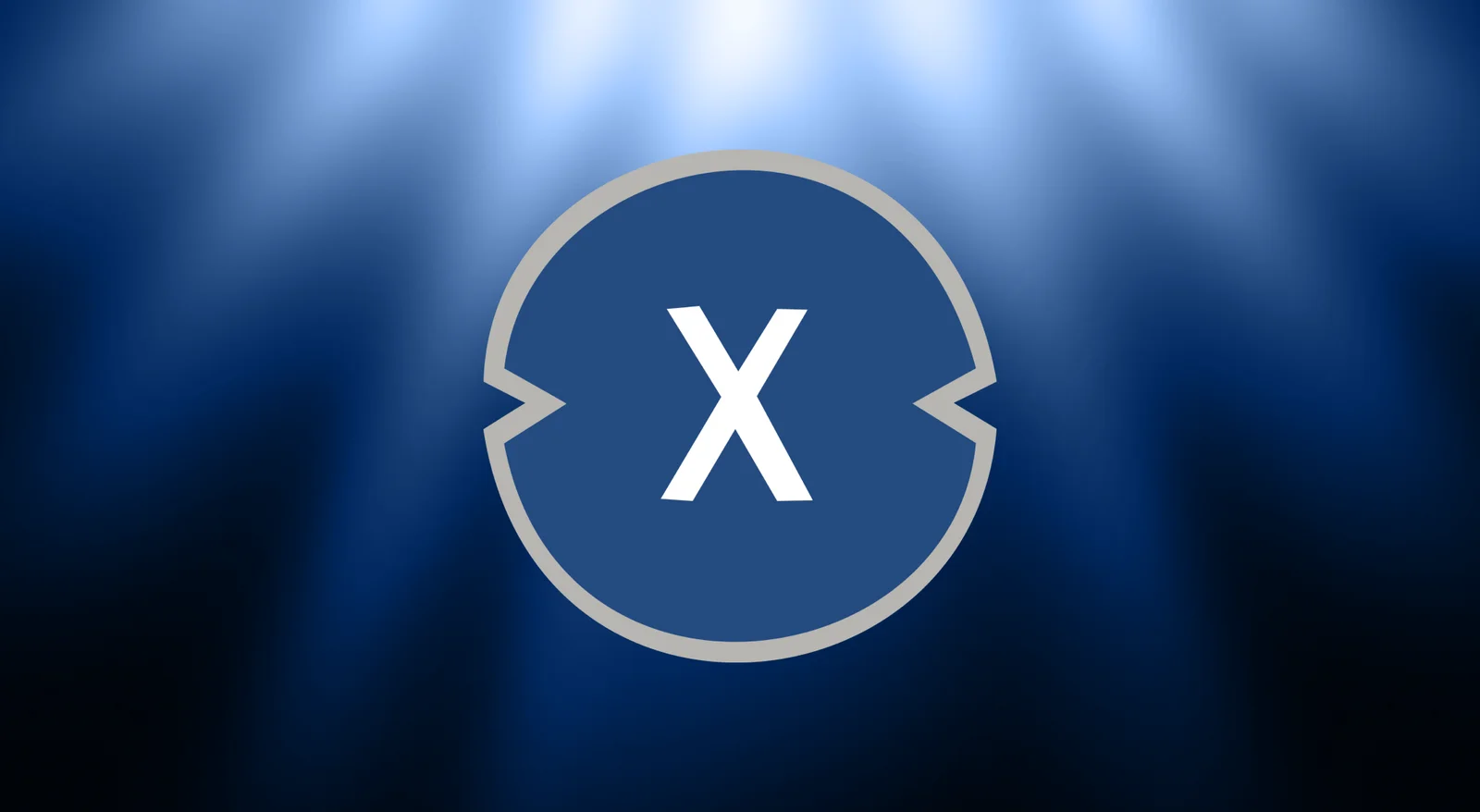
A New Zcash Treasury Has Been Established with Winklevoss Support
US-based biotechnology company Leap Therapeutics has made a bold move into the cryptocurrency sector. The Nasdaq-listed company has changed its name to "Cypherpunk Technologies Inc." As part of this transformation, the company purchased 203,775.27 tokens of the privacy-focused cryptocurrency Zcash (ZEC). This purchase, made at an average price of $245, marked one of the largest investments in privacy-themed assets on the institutional side.$58.88 Million Funding Completed Led by Winklevoss CapitalThe company's transformation was supported by a $58.88 million private equity raise, led entirely by Winklevoss Capital. Approximately $50 million of this funding was used to directly purchase ZEC. The company will trade on the stock exchange under the new ticker symbol "CYPH" starting Thursday.Cypherpunk Technologies' statement stated that its digital asset strategy will complement the company's existing biotechnology activities. CEO Douglas E. Onsi said, “The Zcash investment is part of our goal to create long-term shareholder value. We believe these privacy-based technologies will be critically important, both financially and socially, in the future.”As part of the restructuring, the management team has also changed. Khing Oei, founder of Netherlands-based Bitcoin treasury firm Treasury, has become Cypherpunk’s chairman, while Will McEvoy of Winklevoss Capital has been appointed the company’s first CEO. McEvoy said their investor base has formed “a value-driven community that believes in the long-term potential of Zcash and the future of privacy.”Zcash had gained nearly tenfold in value in the past two months, reaching $735 before falling back to around $460. According to CoinGecko data, the token is still well below its 2016 peak of $3,191. Despite this, Zcash is considered an “encrypted version” of Bitcoin thanks to its privacy-preserving architecture that uses zero-knowledge proofs. According to Galaxy Digital analyst Will Owens, Zcash is an alternative cryptocurrency to Bitcoin in the growing on-chain surveillance environment.Winklevoss Capital, the investment firm led by the Winklevoss brothers, has recently increased its investments in crypto and financial technologies. The firm, the parent company of the Gemini exchange, reported a net loss of $159.5 million in its first post-IPO financial statement as it prepared to enter the prediction markets in recent months.Cypherpunk Technologies' Zcash-focused strategy can be considered parallel to the trend of holding crypto assets in corporate treasuries. This trend, which began with MicroStrategy's Bitcoin accumulation model, is now extending to more niche projects. Furthermore, Zcash's privacy-based structure symbolizes a return to its "cypherpunk" roots.Due to all these developments, the price of Zcash's ZEC is on the rise. As of November 12, 2025, Zcash (ZEC) is trading at $468.74, up 5.88 percent.
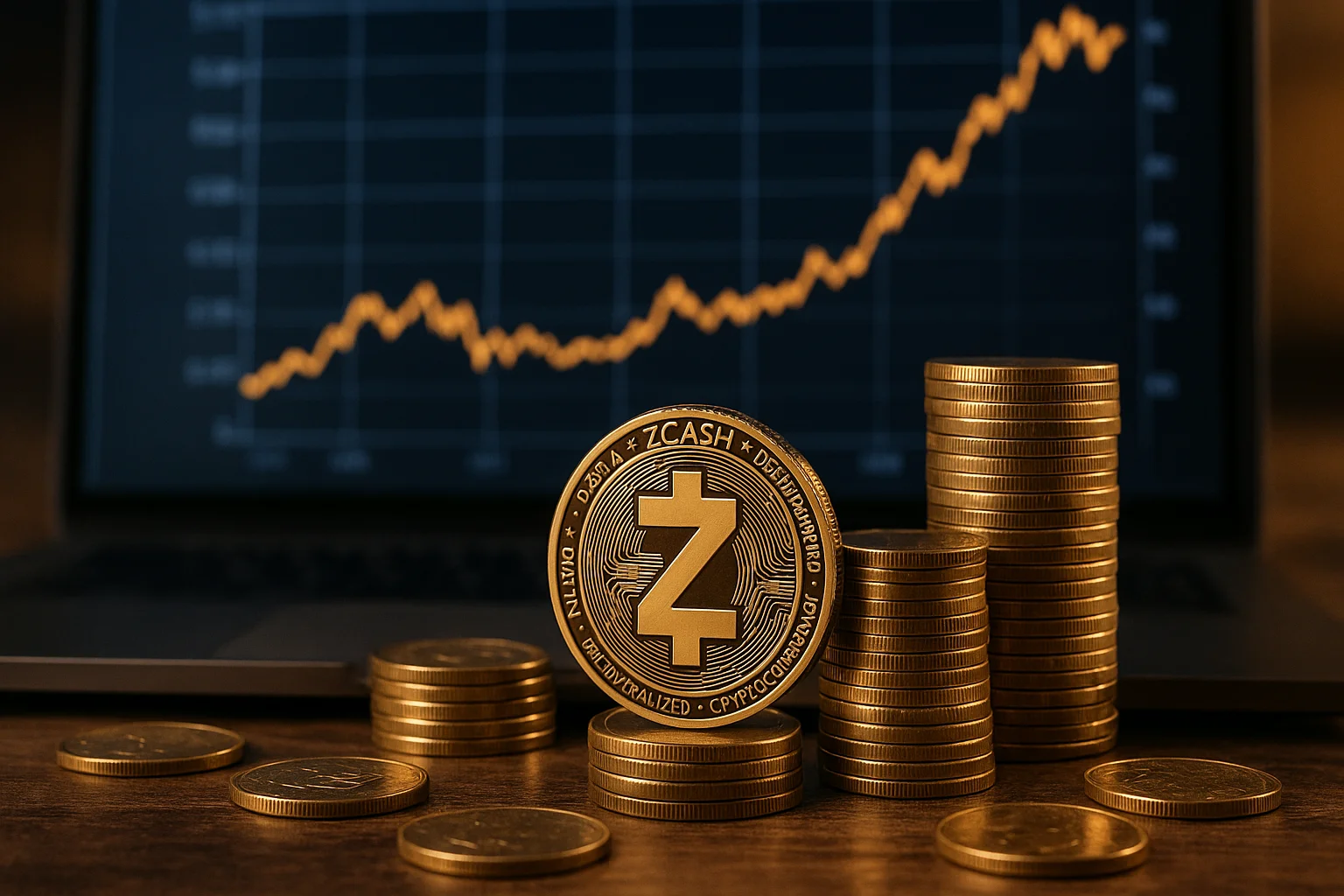
After XRP, Now Chainlink: Bitwise ETF at DTCC
Bitwise, a US-based investment giant, is expanding its foray into the crypto ETF space. The company's spot Chainlink ETF, codenamed CLNK, has been added to the Depository Trust & Clearing Corporation (DTCC) in the US. This development marks the product's arrival, marking the ETF's operational readiness despite the lack of official approval.CLNK surpasses critical pre-launch thresholdDTCC is the agency responsible for clearing and custody of securities transactions in the US. Being listed on the agency's "active and pre-launch" list generally indicates that an ETF has completed its technical preparations and can begin trading quickly after approval. The inclusion of Bitwise's CLNK fund on this list demonstrates that all the necessary infrastructure has been established for a rapid launch following regulatory approval.However, the crucial point here is that DTCC listing does not imply SEC approval. The US Securities and Exchange Commission (SEC) remains the final arbiter of an ETF's ability to trade in the market. Therefore, the timing of CLNK's trading depends entirely on the SEC's decision.This development stands out as another example of the growing interest in ETFs in the crypto market. Following spot Bitcoin and Ethereum ETFs, asset managers are now racing to offer investors funds based on other major blockchain ecosystems. The Chainlink ETF is part of what could be called the "third wave."Chainlink is a project known for its decentralized oracle infrastructure. This system, which provides external data to smart contracts, forms the basis of many applications, from DeFi to tokenization projects. Bitwise's ETF based on this project will allow institutional investors to access crypto assets directly without opening a wallet. This means investing in LINK will now be possible through a regulated product traded on an exchange.For institutional investors, Chainlink represents an investment in the "infrastructure layer" of blockchain technology. Oracle systems play a critical role in both interchain data transfer and the secure operation of tokenization. Therefore, institutional interest in projects like LINK has been steadily increasing recently.If Bitwise's Chainlink ETF is approved, it will significantly expand the range of crypto-based investment products. Following Bitcoin and Ethereum, the bridge between traditional markets and DeFi infrastructure will be further strengthened.Furthermore, considering other ETF applications pending with the SEC, such as spot Solana and Avalanche, CLNK's approval could mark a significant turning point in the crypto ETF race. As traditional investors' interest in digital assets grows, Bitwise's move stands out as a significant development in terms of long-term institutional capital flows into both the Chainlink ecosystem and the broader crypto market.At the time of writing, LINK's price is trading around $15.5, up 2%.
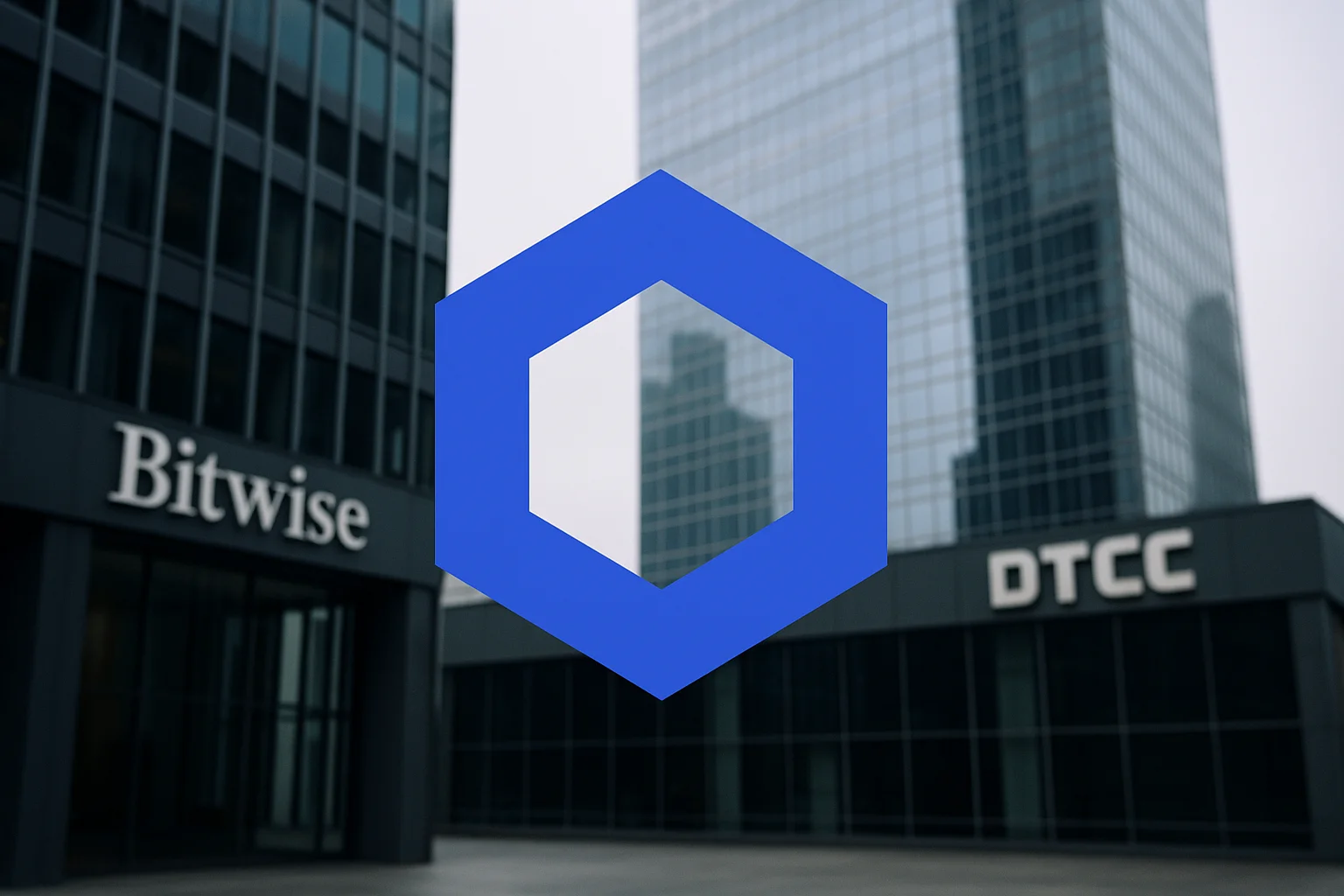
JPMorgan Announces: JPM Coin Era Has Begun in Payments
JPMorgan has taken a significant step in the cryptoasset ecosystem, launching JPM Coin (JPMD), a deposit token developed for corporate clients, on the Base blockchain. With this step, the bank is ushering in a new era combining traditional finance and blockchain technology.JPMorgan Launches JPM CoinJPM Coin is a "deposit token" representing US dollar deposits. In other words, each JPMD represents an actual bank deposit at JPMorgan. Unlike reserve-backed stablecoins, it integrates directly into the banking infrastructure. Corporate clients can now make near-instant transfers 24/7 using this token. This offers a significant speed and efficiency advantage compared to the limited business hours of traditional banking.Following the completion of a pilot program launched in June, JPMorgan's digital payments unit, Kinexys, launched JPMD on Base. Developed by Coinbase, Base is known as Ethereum's Layer-2 solution. This step is also noteworthy as it marks the first time a major bank has offered a corporate payment solution on a public blockchain. According to information shared by the bank, major financial institutions such as B2C2, Coinbase, and Mastercard have successfully completed test transactions.Naveen Mallela, global co-president of Kinexys, summarized JPMorgan's strategy by saying, "We are advancing transactions on public blockchains. Our starting point was Coinbase's Base network." Mallela also confirmed that JPM Coin will be expanded to include various currencies in the future. The bank has registered a trademark for a euro-denominated version called "JPME." This is being interpreted as a precursor to the transition to multi-currency support for digital deposit tokens.Deposit tokens appear to be the next vehicle for digital transformation in the banking system. Each token is backed one-to-one by the deposit held at the bank, providing the user with a secure, transparent, interest-bearing digital asset. This allows both companies and financial institutions to complete high-volume transactions or international payments in seconds and at low cost. Coinbase is also reportedly accepting JPM Coin as collateral, which could expand the token's use in crypto markets.With this initiative, JPMorgan offers a regulatory-compliant, enterprise-grade model for blockchain-based payments. The bank's digital payment network, Kinexys, currently handles over $3 billion a day in dollar, euro, and sterling transactions. JPMorgan's inclusion in this framework will increase both liquidity and network functionality.JPMorgan's move signals a new era in global banking. Other major banks, including BNY Mellon, HSBC, and Barclays, are also working on similar tokenized deposit solutions.

LDO Comment and Price Analysis - November 11, 2025
LDO/USDT Technical AnalysisThe Lido DAO community has proposed a new liquidity buyback mechanism that aims to distribute LDO/wstETH liquidity as a Uniswap v2-style LP position, with ownership held by the Aragon Agent. Now, let's examine what's happening on the LDO price chart from a technical perspective. Falling Wedge Formation Analyzing the chart on the daily time frame, we see that the coin LDO continues to trade within a falling wedge formation, a pattern typically observed in the final stages of downtrends and often indicative of a potential trend reversal.The price is currently trading around $0.86, with the token recently rebounding from the lower boundary of the wedge and initiating a short-term upward move. If this recovery persists, the first critical resistance zone lies between $0.98 and $1.00, an area that coincides with both a horizontal resistance level and the midline of the wedge. This makes it a decisive threshold for the next move. If LDO manages to close above $0.98 on the daily chart, it would confirm an upward breakout from the falling wedge, potentially extending the rally toward $1.23–$1.50. These levels correspond to previous high-volume price regions, further reinforcing their technical significance.However, the $0.82–$0.80 support zone remains crucial. A breakdown below this area could trigger a deeper pullback toward the $0.70 region, which is the lower boundary of the formation and a key structural support.SummaryLDO maintains its position within a falling wedge, signaling a possible end to the prevailing downtrend.$0.98–$1.00 acts as the key breakout zone.Successful breakout targets: $1.23–$1.50.Breakdown below $0.80 could expose the $0.70 support level.These analyses, not offering any kind of investment advice, focus on support and resistance levels considered to offer trading opportunities in the short and medium term according to the market conditions. However, the user is responsible for their own actions and risk management. Moreover, it is highly recommended to use stop loss (SL) during the transactions.

ZK Comment and Price Analysis - November 11, 2025
ZK/USDT Technical AnalysisZKsync continues to stand out among projects which have been developed to enhance Ethereum’s speed and cost-efficiency. With the recent “ZKsync Atlas” upgrade, the network announced its ability to process over 40,000 transactions per second, marking a major leap not only in technical performance but also in attracting investor attention. The development team is simultaneously focusing on expanding institutional adoption, positioning the project for broader real-world use. Falling Trend Breakage Analyzing the chart on the daily time frame we see that the coin ZK has broken out of a long-term descending trendline and is currently undergoing a retest phase. Such movements typically signal confirmation of a trend reversal, suggesting a short-term bullish outlook.The price is currently trading around $0.057, trading just above the broken trendline. This level also coincides with a strong horizontal support zone. Holding this region is critical for maintaining the current bullish pattern .Sustained closes above $0.060 could reinforce upward momentum. The first major resistance is seen near $0.078, which aligns with a previous reaction high. A breakout above this level may extend the move toward $0.13, confirming a broader trend reversal.However, daily closes below $0.055 could weaken the structure, increasing the likelihood of a short-term pullback toward the $0.047–$0.044 range.SummaryZK has broken its long-term descending trend and is now in a retest phase.Holding above $0.055 is crucial for sustaining the bullish setup.Key upside targets: $0.078 and $0.13.A breakdown below $0.055 may invalidate the bullish outlookThese analyses, not offering any kind of investment advice, focus on support and resistance levels considered to offer trading opportunities in the short and medium term according to the market conditions. However, the user is responsible for their own actions and risk management. Morover, it is highly recommended to use stop loss (SL) during the transactions.

WLD Comment and Price Analysis - November 11, 2025
WLD Technical AnalysisPositive developments continue to unfold around Worldcoin (WLD). A Nasdaq-listed company recently announced that it will include WLD tokens in its treasury holdings. This can be considered a move suggesting that the project is now being recognized not only as a digital identity solution but also as a potential store of value among institutional and retail investors. This development reinforces the network’s real-world utility and hints at potential trend shifts on the price charts. The Falling Wedge Analyzing the chart on the daily timeframe, we see that the coin is trading within a descending wedge pattern. This formation typically indicates the final stage of a downtrend and carries bullish reversal potential. The price is currently consolidating near the midline of the wedge, showing early signs of stabilization.The $0.68–$0.76 range serves as a key horizontal support zone in the short term. Sustained closes above this level could strengthen the recovery momentum. The $0.98–$1.07 area aligns with the wedge’s upper midline and represents the first major resistance zone. A decisive breakout here could validate the wedge structure and trigger a trend reversal confirmation.On the other hand, daily closes below $0.68 would imply a breakdown beneath the wedge, exposing the price to further declines toward $0.59–$0.54, which aligns with the previous cycle’s low.Support and Resistance LevelsSupport levels: $0.68 – $0.59 – $0.54Resistance levels: $0.98 – $1.07 – $1.41 – $2.21These analyses, not offering any kind of investment advice, focus on support and resistance levels considered to offer trading opportunities in the short and medium term according to the market conditions. However, the user is responsible for their own actions and risk management. Moreover, it is highly recommended to use stop loss (SL) during the transactions.
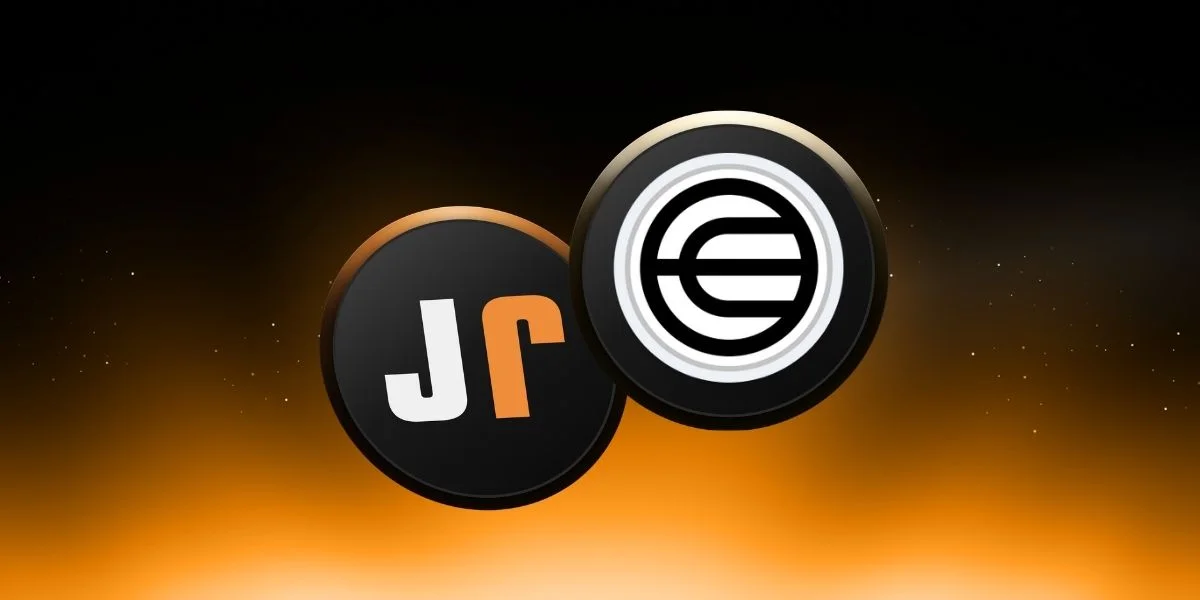
Allora (ALLO) on Binance: Airdrop Distribution Begins, Trading Opening Postponed
Binance has announced a new project as part of its HODLer Airdrops program. The world's largest cryptocurrency exchange introduced its AI-driven network, Allora (ALLO), to its users as part of its 58th HODLer Airdrop event. Described as a "self-improving decentralized AI network," Allora will offer retroactive rewards to BNB holders.Users who deposit their BNB balances into Simple Earn (flexible or locked) or On-Chain Yields products between October 23–25, 2025, will receive a share of the 15 million ALLO token airdrop distribution. Binance announced that it will announce the airdrop information within 24 hours, and the tokens will be transferred to users' spot wallets at least one hour before trading begins.Allora will be listed on Binance with USDT, USDC, BNB, and TRY trading pairs. The trading opening, initially scheduled for 13:00 UTC (16:00 CET), was postponed to 14:00 UTC (17:00 CET) due to technical reasons. The exchange also announced that ALLO will be marked with a "seed tag," and users will be able to begin depositing tokens starting on the morning of November 11th. Airdrop and Token EconomyAllora's total supply is set at 1 billion units, while the initial circulating amount will be 200.5 million ALLO. This represents 20% of the total supply. The 15 million ALLO to be distributed through HODLer Airdrops constitutes 1.5% of the total supply. Binance also announced that it will allocate an additional 20 million ALLO for marketing campaigns to be carried out six months later.The token's smart contracts are available on both the BNB Smart Chain, Ethereum, and Base networks. Binance also announced that there are no listing fees and that a detailed research report will be released within 48 hours. What are HODLer Airdrops?The Binance HODLer Airdrops program is a system aimed at rewarding BNB holders. It allows users to earn tokens at rates determined by snapshots of their past BNB balances, without requiring any additional action. Users who deposit BNB into Simple Earn or On-Chain Yields products can benefit from both HODLer Airdrops and other campaigns like Launchpool.The program's unique feature is that earnings are distributed retroactively. This means users can acquire tokens from new projects during specific periods simply by holding BNB. Binance emphasizes that this method offers a more equitable distribution model to the community and encourages long-term investors.About Allora (ALLO)Allora is a network designed to create decentralized artificial intelligence solutions. The platform aims to create a smarter, self-improving ecosystem by combining machine learning models on-chain. In this respect, it stands out as one of the next-generation projects combining artificial intelligence and blockchain technology. With the listing of ALLO, users will be able to directly trade the new token and take advantage of additional future campaigns.
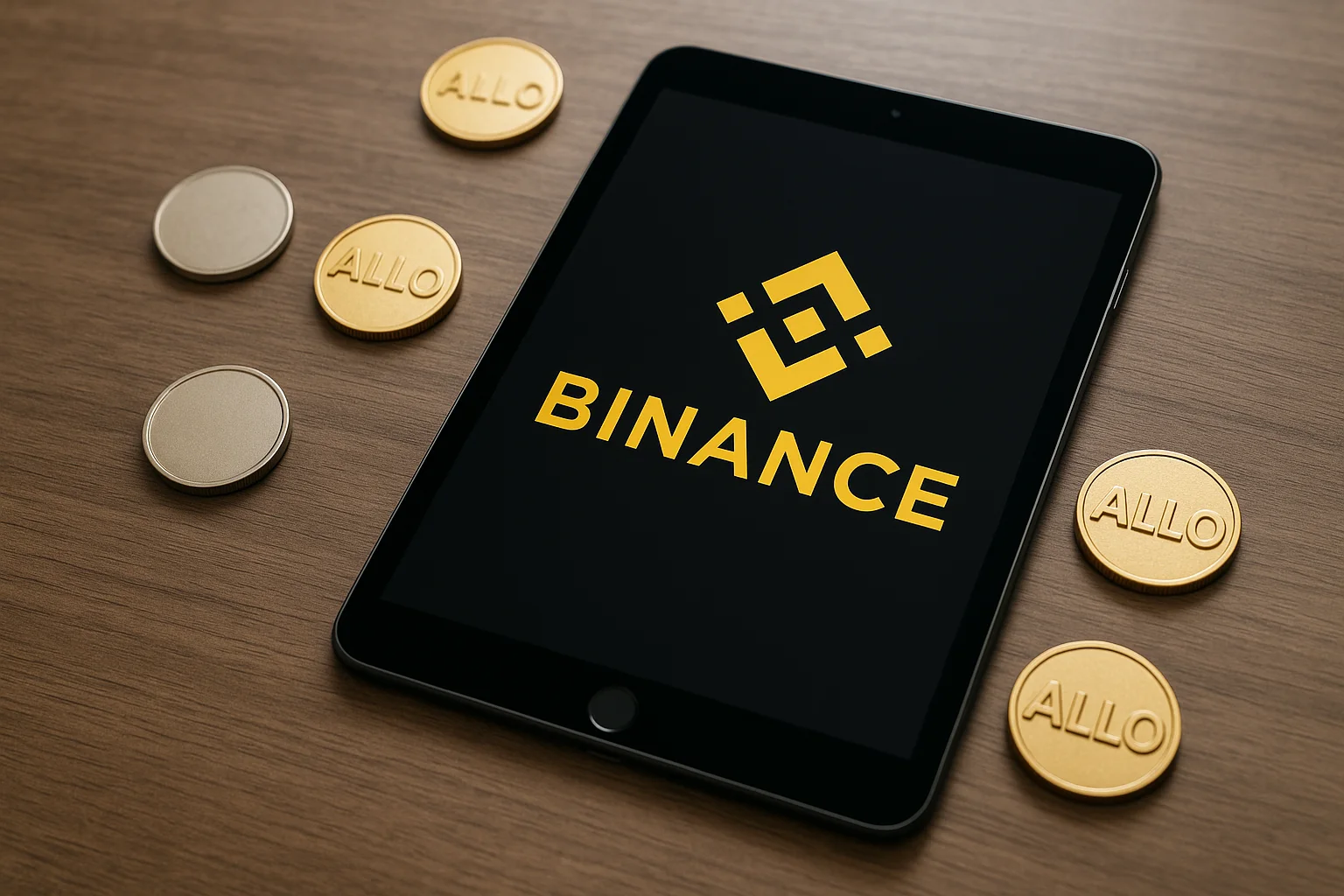
Sygnum: Institutions Strong in Crypto, But 2026 Anxiety Grows
Institutional investors are turning to crypto markets again. According to a new report from Sygnum Bank, institutional interest in crypto assets increased rapidly in the last quarter of the year, this time driven not by short-term gains but by portfolio diversification. However, experts warn that this momentum may slow as 2026 approaches.Sygnum Report: Institutions Focus on CryptosIt has been revealed that institutional investors turned to crypto assets in the last quarter of the year, but expectations of a "boom" signal a slowdown towards 2026. The "Future Finance 2025" report from Sygnum Bank, the Swiss-Singapore-based digital asset bank, revealed this trend.According to the report's key findings, 61% of institutional investors plan to increase their digital asset investments, with this figure reaching 38% for the fourth quarter of the year. There is also a significant shift in the motivation for investing in crypto assets: "Speculation" is no longer the primary motivation, replacing it with portfolio diversification. The Sygnum research team interprets this shift as "institutional players are moving from thinking of crypto solely as a defensive position to seeing it as a way to participate in the structural transformation of global finance." In short, crypto assets are now beginning to be accepted as an alternative investment class, not just a short-term source of profit.Strategy ChangeA significant shift is also being observed in the approach of institutional investors. Actively managed strategies (42%) now surpass index-based strategies (39%). This suggests that investors are shifting from a "buy a token and wait" model to flexible strategies that can respond quickly to policy changes and market fluctuations.Furthermore, interest in investment instruments beyond Bitcoin and Ethereum has increased significantly. More than 80% of investors expressed interest in broader crypto ETFs, and nearly 70% said they would increase their allocation if offered staking advantages. Furthermore, the tokenization of real-world assets is also on the rise: interest in this direction has increased from 6% to 26% compared to a year ago. Cautious Outlook for 2026However, not all the data is entirely positive. The report describes 2025 as a "year of moderate risk and strong demand catalysts," noting that factors such as regulatory uncertainty and declining liquidity could weigh on momentum. Indeed, while the vast majority of investors remain confident in the long term, it predicts that crypto market momentum could begin to decline starting in mid-2026.Among the data included in the report: 91% of high-net-worth individuals believe crypto will play a key role in long-term wealth preservation. 81% view Bitcoin as a treasury reserve asset, and nearly 70% believe that holding cash for the next five years carries a higher opportunity cost than holding Bitcoin.

Banking Giant Standard Chartered Announces Stablecoin Partnership
The new partnership announced between Standard Chartered and DCS Card Centre marks a significant step in the cryptocurrency ecosystem. The two institutions announced a partnership on DeCard, a credit card product that allows users to make daily purchases with stablecoins (stable-value crypto assets). This partnership will initially launch in Singapore, with plans to expand to other major markets.Standard Chartered to Provide Banking Infrastructure for DCSDCS Card Centre's next-generation payment solution, DeCard, offers users a platform that can be used like a traditional credit card, but allows users to process stablecoin transactions in the background. Cardholders will be able to track their balance management and refunds through DCS's "D-Vault" account system.Standard Chartered will play a key role in this partnership with its banking infrastructure, transaction banking, and financial market services. The institution will support all processes, from cardholder top-ups and account management to fiat and stablecoin payment reconciliation. It will also enable DCS to instantly define and reconcile payments on a channel-by-channel basis through virtual account and API integrations.In a statement released by DCS, DCS's commercial director, Joan Han, said, "Thanks to Standard Chartered's banking expertise and robust infrastructure, we have the opportunity to bring stablecoin payments to the mainstream in a secure, transparent, and efficient manner." Dhiraj Bajaj, Standard Chartered's global head of TB FI sales, stated that this partnership is part of the institution's strategy to bridge traditional finance and Web3.Singapore is known to offer a relatively open environment for regulating crypto assets. For example, the Monetary Authority of Singapore (MAS) classified stablecoins as "digital payment tokens" and implemented a separate framework for single-currency stablecoins in August 2023. This regulatory environment provides a suitable environment for the launch of innovative payment products like DeCard in Singapore.However, the risks associated with such innovations should also be considered. Issues such as whether stablecoins truly maintain their stable value, the security of payment networks, transaction costs for users, and refund mechanisms still require careful monitoring. Furthermore, although the initial launch is in Singapore, it is anticipated that expansion plans to other markets may not be straightforward due to regulatory constraints, local market structure, and competitive conditions.In conclusion, Standard Chartered, through its DCS partnership DeCard, offers a remarkable project for transforming stablecoins into everyday spending. As the potential for crypto assets to transform the financial system grows daily, such collaborations further accelerate the integration of traditional financial institutions and crypto businesses.
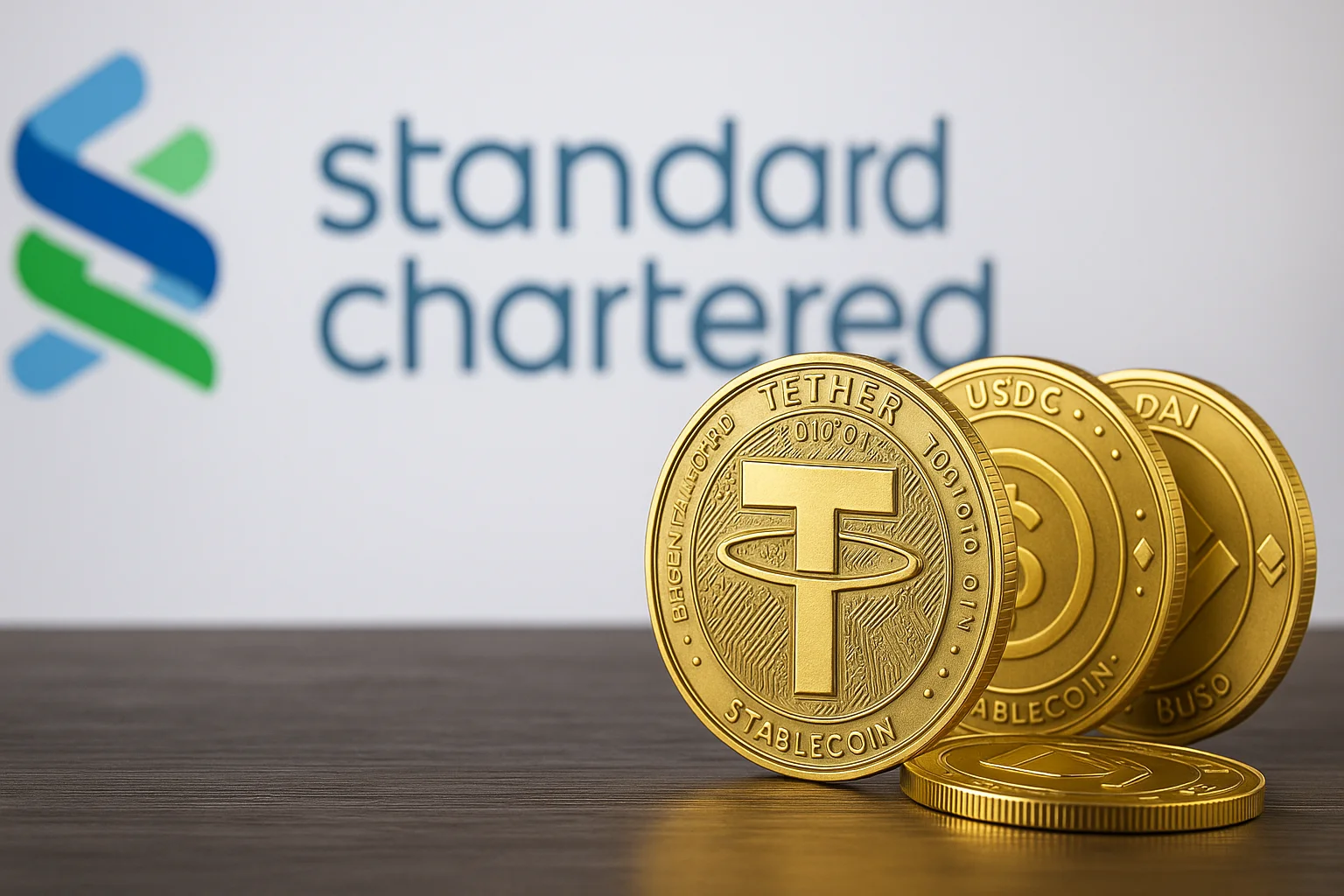
Coinbase Deletes 5 Altcoins and Adds 2 Altcoins to Roadmap
Coinbase, a major US-based cryptocurrency exchange, has announced a series of notable decisions in the crypto world. These announcements include both plans to delist existing assets and a roadmap for listing new ones.Coinbase Delists 5 AltcoinsAccording to a statement released on November 11th, Coinbase has decided to remove five altcoins from its platform on November 26, 2025. The assets to be delisted include: Clover Finance (CLV), EOS (EOS), League of Kingdoms Arena (LOKA), Muse DAO (MUSE), and Wrapped Centrifuge (WCFG). The decision was announced as follows: "We conduct regular reviews of assets listed on our exchange to ensure they meet our standards; following our final assessments, we have decided to suspend trading for these assets on November 26, 2025." Such delisting decisions are critical for investors, as delisting an asset can halt trading on the platform, reduce liquidity, and exert price pressure. For example, MUSE is reported to have lost nearly 25% of its value in a single minute. Such a drop could shake investor confidence, and those holding these assets in their portfolios should exercise caution. Other altcoins were affected as follows:CLV fell 5%EOS fell 3.5%LOKA lost 11% of its valueMUSE fell 25%CFG fell 7%Delisting could be due to various factors: assets rebranding, removal of their previous versions, or technical and regulatory issues that do not meet exchange standards. According to Coinbase's statement, such assets may have been rebranded and may be removed from the platform.2 altcoins added to listing roadmapFollowing the delisting process, another important step is on the listing front. Coinbase announced the addition of Fluid (FLUID) and Nomina (NOM) to its listing roadmap. This announcement has raised the expectation that these assets could potentially be traded on the platform. Increases of around 8% were reported for FLUID and close to 15% for NOM. Such listing signals generally create positive market sentiment, as listing on an exchange with a large user base can increase liquidity and visibility.However, there's still a point to be noted: Being added to the roadmap doesn't guarantee a listing. Coinbase's statement stated that these assets will be listed "if they meet criteria such as technical infrastructure and market maker support for listing." Therefore, no exact date has been given; further announcements may be made as the process progresses.
